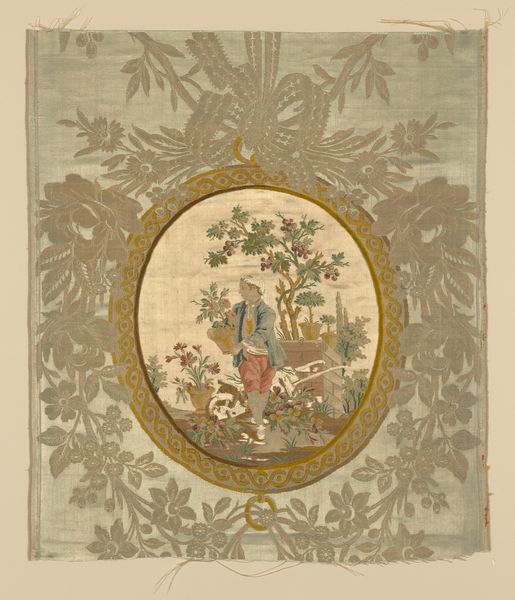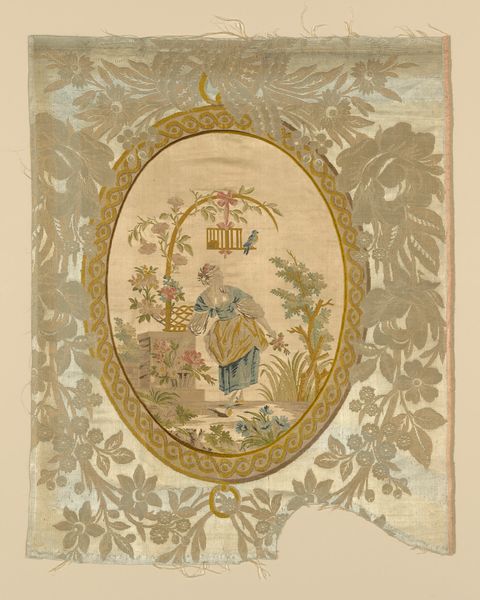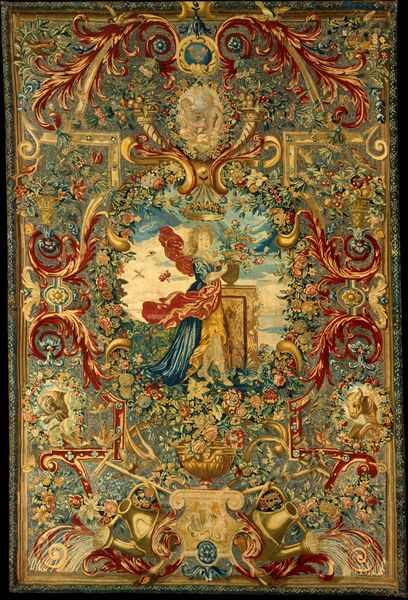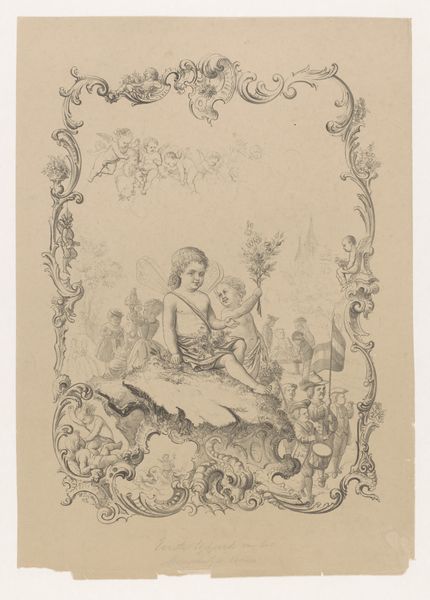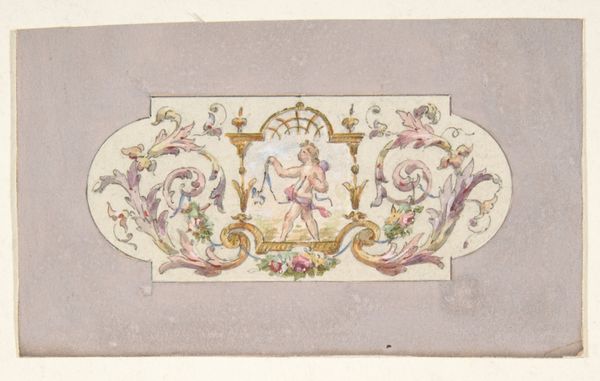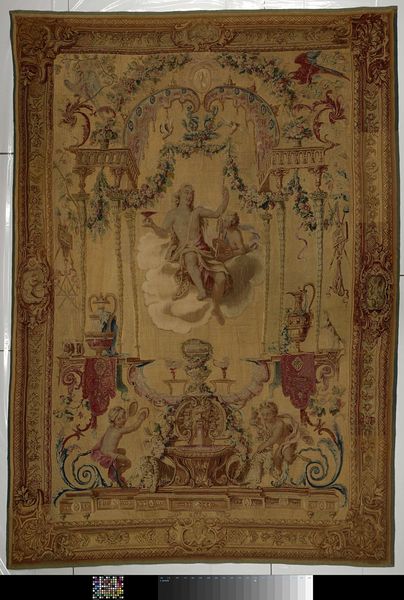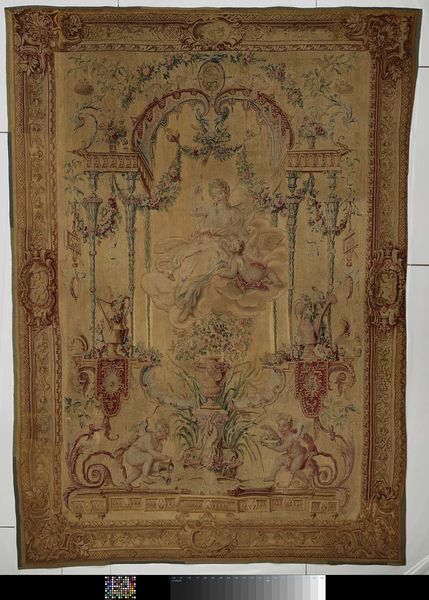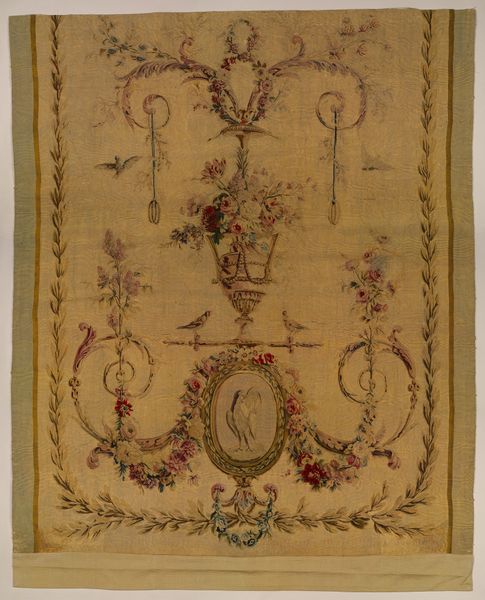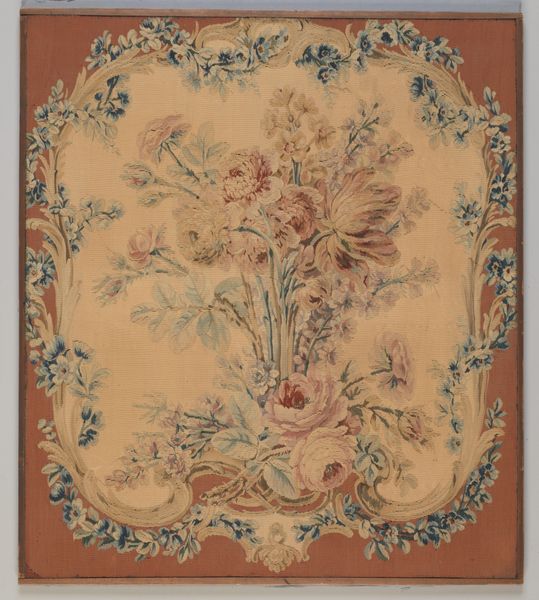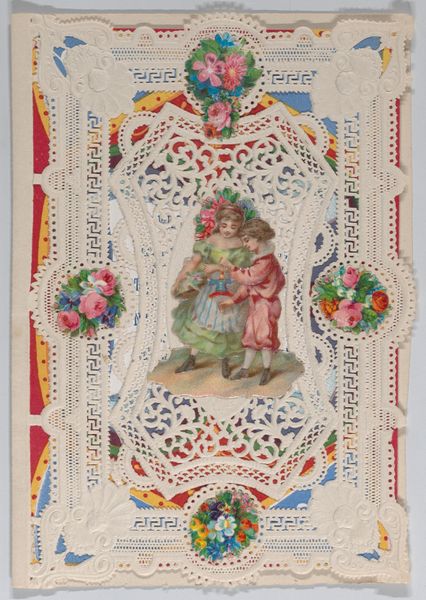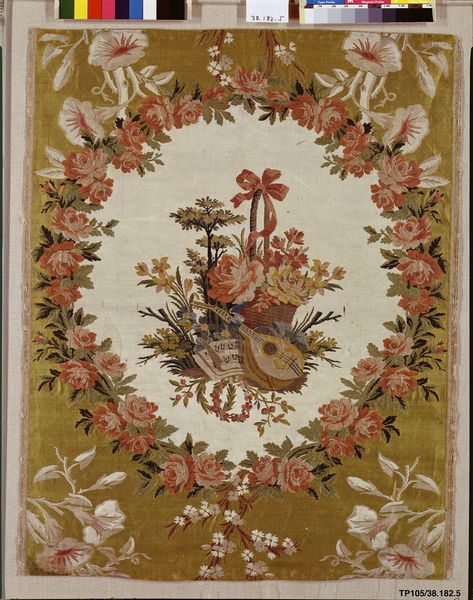
weaving, textile
#
weaving
#
landscape
#
textile
#
figuration
#
genre-painting
#
decorative-art
#
decorative art
#
rococo
Dimensions: height 78.5 cm, width 63.5 cm
Copyright: Rijks Museum: Open Domain
Editor: This is “Tapisserie met "Petite Beurrière," a textile weaving created sometime between 1755 and 1765 by the Manufacture Royale des Gobelins. It's surprisingly small. What strikes me most is its softness, and how domestic it feels. What story do you think it is trying to tell? Curator: Well, it is crucial to recognize that the Rococo style, with its emphasis on frivolity and pastoral scenes, often served as a distraction for the aristocracy, particularly in pre-revolutionary France. Consider the subject matter: a seemingly innocent milkmaid within this decorative frame. Editor: A distraction? You mean there might be a deeper, less obvious narrative? Curator: Precisely! How does the romanticized portrayal of rural life contrast with the harsh realities faced by the peasantry at the time? The elite consumed art that romanticized "simpler" existences precisely to ignore the real issues. And we can also consider this through the lens of gender, particularly since the artist who designed this, Maurice Jacques, created a series based on compositions by the painter François Boucher: how are the women represented and consumed within these artistic conventions? Does this 'petite beurrière' hold some meaning for gender representation at the time? Editor: So, by focusing on the cultural and political environment in which it was created, we begin to understand the tapestry, not just as decoration, but as a loaded object. It's like this beautiful facade is covering something much more complicated. Curator: Indeed. Engaging with art is an act of unveiling these layers, it gives insight into broader societal concerns related to identity, gender and class structures during that particular historical moment. Editor: I had not considered the idea that an artwork so lovely might reveal social struggles! Thank you for opening my eyes to it! Curator: My pleasure, seeing the past embedded into an artwork always shifts my understanding too!
Comments
No comments
Be the first to comment and join the conversation on the ultimate creative platform.
